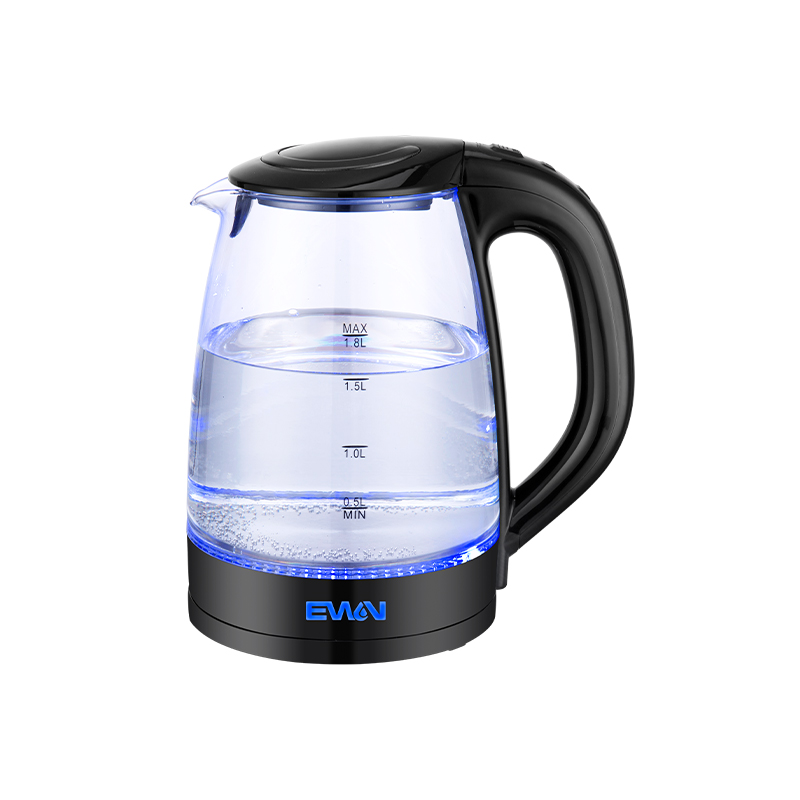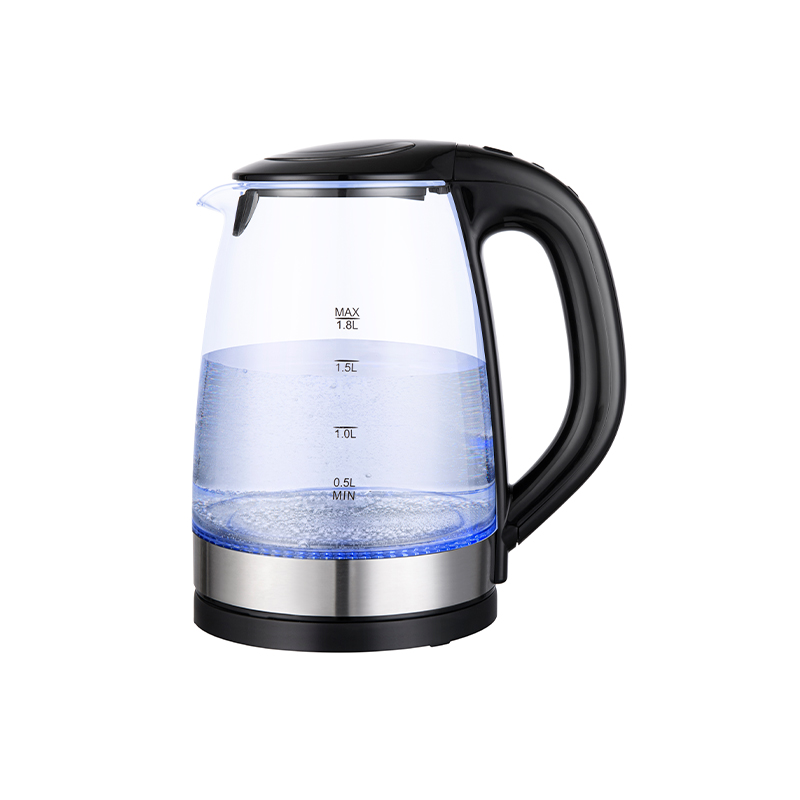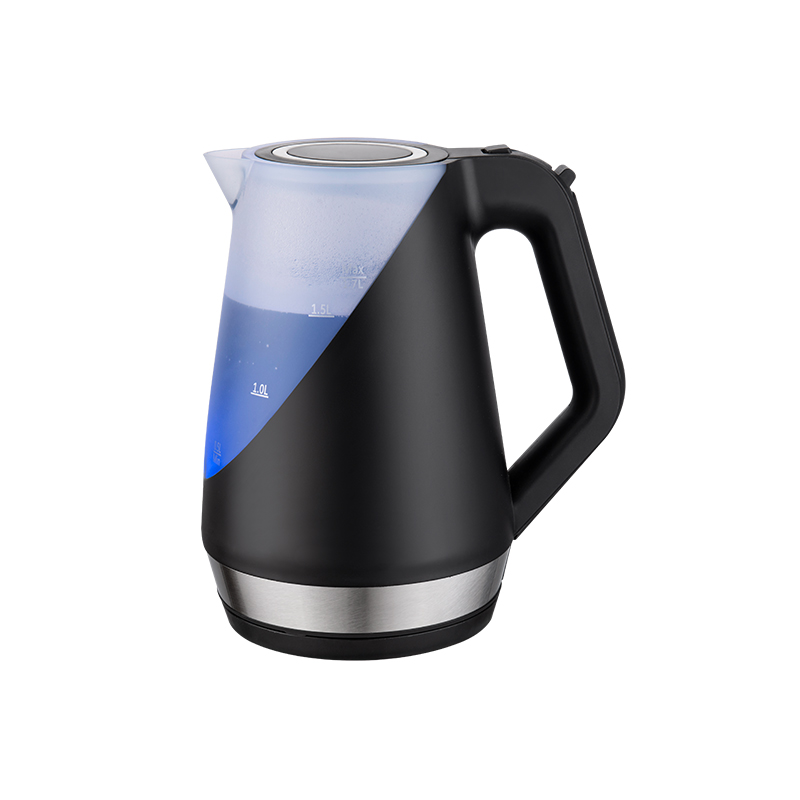+86-18667862027
Web Menu
Product Search
Exit Menu
What benefits does an electric kettle provide in terms of speed, energy efficiency, and convenience?
Introduction to Electric Kettles
Electric kettles are one of the most widely used household appliances in modern kitchens. They provide a fast, efficient, and convenient way to boil water, and their popularity has grown in both residential and commercial settings. Electric kettles are appreciated for their speed in boiling water, energy efficiency, and the convenience they offer compared to traditional methods such as stovetop boiling. In this article, we will explore the benefits of electric kettles, particularly focusing on how they improve speed, energy efficiency, and overall convenience in daily use.
Speed: How Electric Kettles Boil Water Quickly
One of the main advantages of using an electric kettle is its speed. Electric kettles are designed to boil water much faster than traditional stovetop kettles or microwaves. The heating element inside an electric kettle is usually located directly in contact with the water, allowing for faster heat transfer and reducing the time required to bring the water to a boil.
Electric kettles are engineered with high-wattage heating elements, often ranging between 1500 to 3000 watts, which ensure a rapid boil. Most electric kettles can bring a full kettle of water (about 1.7 liters) to a boil in around 4 to 6 minutes, depending on the power of the kettle and the amount of water. In comparison, a stovetop kettle may take much longer due to the less efficient heat transfer from the burner to the kettle, especially if the stovetop is not as powerful or if the kettle is made from a material that does not conduct heat well.
Boiling Times Comparison
| Appliance | Time to Boil 1.7 Liters of Water |
|---|---|
| Electric Kettle | 4 to 6 minutes |
| Stovetop Kettle | 8 to 12 minutes |
| Microwave | 5 to 7 minutes |
This quick boiling time is particularly useful for people who need hot water in a hurry, whether for making tea, coffee, oatmeal, or other uses. The ability to rapidly boil water also makes electric kettles ideal for busy households or workplaces where efficiency is a priority.
Energy Efficiency: Saving Power While Boiling Water
Electric kettles are generally more energy-efficient than other water-heating methods, such as stovetops or microwaves. This efficiency stems from the direct heating of water using an internal element, unlike stovetops where heat is applied to the bottom of the kettle, causing energy loss. The heating element in an electric kettle is submerged in the water, allowing it to transfer energy more directly and with less waste.
Additionally, electric kettles have an automatic shut-off feature once the water reaches its boiling point, ensuring that energy is not wasted by keeping the water heated unnecessarily. Many models also have temperature control features, allowing users to select the desired water temperature, which further reduces the need for re-boiling and ensures that energy is only used for the specific requirement at hand.
For comparison, stovetop kettles are less efficient as they require more energy to heat up both the burner and the kettle itself. In contrast, electric kettles transfer energy directly to the water, minimizing heat loss and reducing the overall energy consumption for each boiling cycle.
Energy Consumption Comparison
| Appliance | Average Power Consumption (kWh) |
|---|---|
| Electric Kettle | 0.05 - 0.08 kWh (per boil) |
| Stovetop Kettle | 0.10 - 0.15 kWh (per boil) |
| Microwave | 0.08 - 0.12 kWh (per boil) |
As shown in the table, electric kettles consume significantly less energy per boil compared to other appliances. This efficiency not only helps in reducing household energy costs but also makes them an environmentally friendly option by reducing overall electricity consumption.
Convenience: Easy to Use and Maintain
Electric kettles are designed with user convenience in mind. They are often lighter and easier to handle than stovetop kettles, which can become heavy when filled with water. Most electric kettles come with features like cordless designs, swivel bases, and ergonomic handles that make pouring easier and safer, especially when the water is hot.
Another aspect of convenience is the automatic shut-off function. Once the water reaches a boil, the kettle automatically turns off, preventing it from boiling dry and offering peace of mind to users who may forget to turn off the kettle. This safety feature is particularly useful in households with children or in environments where the kettle may be left unattended for a brief period.
Additionally, electric kettles are easier to clean than stovetop kettles. Many models have removable and washable filters to prevent limescale buildup, which can affect the kettle’s performance and water quality. Some electric kettles also feature a stainless-steel interior that is less prone to staining and is easier to wipe clean, making maintenance a simple task.
Convenience Features of Electric Kettles
| Feature | Benefit |
|---|---|
| Cordless Design | Allows for easy pouring and mobility. |
| Automatic Shut-off | Prevents boiling dry, improving safety and energy efficiency. |
| Temperature Control | Offers flexibility for different uses (e.g., making tea, coffee). |
| Removable Filter | Helps reduce limescale buildup, improving water quality and ease of cleaning. |
Versatility: More Than Just Boiling Water
While the primary function of an electric kettle is to boil water, many modern models come with additional features that enhance their versatility. Temperature control is one such feature, allowing users to select a specific temperature for different applications, such as brewing green tea, making coffee, or preparing instant soups or baby formula.
Some electric kettles also come with a keep-warm function, which allows the water to remain at a set temperature for an extended period, typically up to an hour. This is ideal for people who need hot water available at all times, such as in an office environment or for a family that regularly uses hot water throughout the day.
Versatility Features in Modern Electric Kettles
| Feature | Function |
|---|---|
| Temperature Control | Allows users to set precise temperatures for specific uses (e.g., 80°C for green tea). |
| Keep-Warm Function | Keeps water at a constant temperature for up to one hour. |
| Multiple Boil Settings | Offers quick boil or gradual heating, depending on the user's preference. |
Portability: Ideal for Travel and Small Spaces
Another significant advantage of electric kettles is their portability. Unlike bulky stovetop kettles, electric kettles are typically lightweight and compact, making them ideal for travel or use in small kitchens. Many travel-sized models are available, which are designed to be convenient and efficient while on the go.
Electric kettles can be easily packed for travel or used in places where space is limited, such as hotel rooms, dormitories, or even small offices. The portability of these appliances further enhances their convenience and makes them a popular choice for both residential and commercial use.
Safety: Built-in Features to Protect Users
Electric kettles also provide several safety features that enhance their usability. The most common safety feature is the automatic shut-off, which ensures that the kettle turns off as soon as the water reaches boiling point. This reduces the risk of the kettle running dry and potentially damaging the heating element. Many models also have boil-dry protection, which prevents the kettle from operating without water inside.Additionally, modern electric kettles often come with cool-touch exteriors to prevent accidental burns. This is particularly beneficial in households with children or elderly individuals who may be more prone to accidents.
address
No.935 Qiye Road, Zhouxiang Town, Cixi City, Zhejiang Province, China
Sale’s Email
leila@nbewin.com
sales8@nbewin.com
sales9@nbewin.com
Copyrighte Ningbo Ewin Electrical Appliances Co., Ltd. All Rights Reserved.












